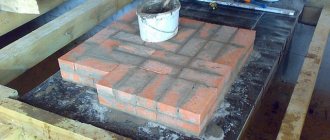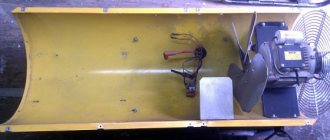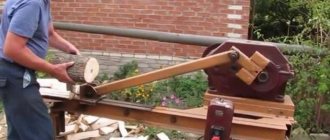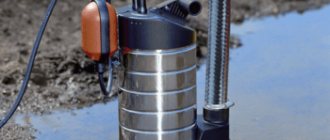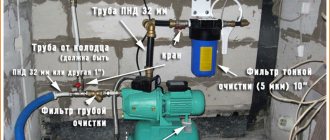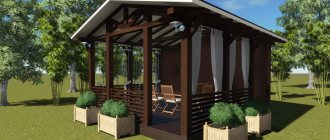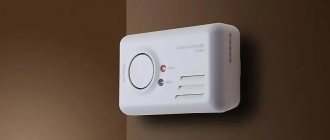Before we look at our rating of the best solid fuel boilers of 2022, I would like to answer a number of important questions that will help many novice users decide on a purchase. First, you need to decide what to choose: a single-circuit boiler paired with a boiler or column, or a double-circuit analogue, equipped with an additional heat exchanger for organizing hot water supply. Due to the fact that our list contains an overwhelming number of affordable and budget-friendly models, we focused on single-circuit solutions (mainly) for several reasons: they are cheaper; in the event of a breakdown, the entire house will not be left without heat; the boiler and boiler provide quick access to heat and hot water. On the other hand, dual-circuit models provide space saving, as they combine two types of equipment.
In turn, according to the principle of operation, all solid fuel solutions for the home can be divided into several categories:
- Pyrolysis - in such equipment the fuel smolders and does not burn, as is the case with analogues, as a result of which only gases are released, which, in turn, are saturated with heat. It is important that the firewood and processed products have high humidity for pyrolysis;
- Classical - in such systems, heat is released during the flaming combustion of solid materials, and to maintain the temperature it is necessary to regularly replenish reserves with coal, firewood and processing waste, including stumps;
- Long burning - in such devices heat is generated slowly, which is due to the name of the equipment. The main advantage is the burning time of firewood, up to several days.
Purpose and scope of application
A solid fuel boiler is a device that generates thermal energy by burning solid fuels - firewood, coal, briquettes, etc.
It is used for supplying hot water and heating buildings, country houses, apartments, and summer cottages. It is popular in regions with low gasification levels or unstable power supplies.
Components of the structure
The traditional boiler construction scheme has become a design consisting of several functional modules in a single housing.
1. Heat exchanger – a device for transferring the heat energy generated during combustion to the coolant. May be made of cast iron or steel. Service life up to 20 years.
2. Firebox with a door - a chamber where the load is placed and combustion occurs.
3. Grate – a device for supplying air, uniformly distributing materials, and sifting waste into the ash pan. Made from gray cast iron.
4. Hatch – cleaning the upper channels.
5. Thermostat – maintaining the set temperature level:
- mechanical – traction control;
- automatic (microprocessor controller).
6. Additional devices - for safety and comfort:
- ignition burner;
- draft regulator;
- thermostatic valve.
Reviews of household solid fuel boilers: advantages and disadvantages
| Advantages | Flaws |
| Cheapness and availability of both boilers and fuel, “omnivorousness” of most models. The operating costs of solid fuel boilers are also among the lowest, lower only for gas and some liquid fuel boilers | The need to organize a seasonal warehouse for fuel storage, which means additional space, effort and expense |
| Reliability and simplicity due to the simple design, in which most often there is simply nothing to break | The need for constant monitoring and management. Even long-burning boilers require regular refilling of firewood, manual ignition and constant monitoring, not to mention classic inexpensive models |
| Installation of a TT boiler does not require approval or permitting documentation, as is the case with gas or electricity | Transportation, storage and combustion of solid fuels involves increased indoor pollution and a characteristic odor, especially when burning coal. |
| Prices for the most budget wood-burning models start from 12-14 thousand rubles | According to owner reviews, the prices for more technologically advanced and automated models are quite high, paying off for at least 5 years. |
| Independence from external factors, most models are non-volatile | |
| A huge selection of models for any budget and functionality, the availability of single-circuit and double-circuit models, as well as automated boilers that practically do not require human intervention | |
| Easy to use and maintain. Heating and cleaning modern solid fuel boilers is much easier and more comfortable than older models |
Operating principle
Main stages
1. The boiler begins to work from the moment of ignition, when the temperature rises sharply to 600° in five to ten minutes. At the same time, according to the settings, the heat exchanger is heated to 40°-70°.
2. As combustion progresses, the temperature in the furnace increases to 1000°-1300°, and the heating of the coolant - water - reaches an operating value of no more than 95°, which is maintained by regulating the air supply into the combustion chamber with a valve.
Heating the coolant above 95° is dangerous for the system and can damage it!
3. After complete combustion with the formation of smoldering coals, the temperature slowly decreases.
Advantages
- Long-term autonomy with the possibility of use as a backup heat source during a power outage or gas supply.
- High efficiency factor (efficiency), reaching 85%.
- Long-term combustion mode using the resulting flue gas that supports the process.
- Cheap fuel, but with costs for transportation, loading and unloading, and storage.
- Reliability and long service life.
- Versatility.
- Simplicity of design.
- Lower price compared to other types of boilers (electric or gas) with the same power ratings.
Flaws
- The need for a dedicated room for the unit, as well as storage of supplies.
- Mandatory installation of a chimney.
- Labor-intensive operation for loading and cleaning from ash and soot.
Customer Reviews
Ignat K.
Protherm Beaver 50 DLO 39 kW
Advantages: It has been working since 2014 with virtually no complaints. At the same time, only one inspection took place (one year after installation). Disadvantages: It often turns on to maintain the temperature; it can turn on/off 2 times in 10 minutes. I would like to adjust the hysteresis of the tº spread. After 6 years, something began to squeak when the pump rotates. Comment: One winter it turned off with error F5 - problems with traction. After I removed the ice that had formed from the pipe (and there was actually a lot of it frozen after the snowfall and severe frost), the problem was solved. It seems to me that those who get their entire controller replaced for the F5 error are simply being scammed out of money.
Novel
Teplodar Cooper Praktik 8
Advantages: Electronic control. Quiet operation. Weekly timer Connection of an external thermostat Burner modulation Built-in expansion tank Possibility of using non-freezing coolant Disadvantages: Operation of an anti-freeze system. The manufacturer cannot provide information on the OpenTherm interface, which is declared in this boiler, and the equipment compatible with it. Comment: I was a little disappointed by the breakdown. Immediately after the initial startup, the system board needed to be replaced - the system did not see that the burner was lit. But the issue was resolved directly with the manufacturer. I received the new fee by mail 4 days after applying. I installed it myself. Everything has been working fine for a year now. The service is fine. Incomprehensible anti-freeze system. The pump turns on at +8, turns off at +12, and the burner turns on at +5. And if the temperature falls into the region of +10, then the circulation pump works for days. And if non-freezing coolant is filled in, then this system is not needed at all.
Vladimir Malvinov
ZOTA Box 8 8 kW
Advantages: Good and reliable boiler Disadvantages: I haven’t found it in a year Comment: On the advice of friends, we purchased a boiler. A voltage stabilizer was immediately purchased; in our village we have large power surges, the lights blink frequently. For almost a year of operation, the boiler has never been repaired, only scheduled maintenance. . The reliability and safety of the boiler is also at the highest level. Heat exchangers can withstand the test of fairly hard water. There are no complaints, we are completely satisfied with the purchase, everything is simple and clear. I advise you to buy!
Kirill M.
ZOTA Topol-22VK 22 kW
Pros: Excellent boiler. There are commissioning features. Reading the manual!!! By default, the turbo water heating mode is set, which is needed if you have a long distance from the boiler to the point of water consumption; the water is heated to 70 degrees immediately. If you have a bathroom behind a wall, it is better to turn off this mode in the settings. In the second mode, the boiler is set to maximum heating output, so if you place the boiler in a small room, it is better to also reduce the heating. This is important, and then you will be happy and there will be no problems with operation. And also, if there are problems with water pressure, then install a mixer with separate valves (do not install joysticks), but this applies to any boilers.
Vasily D.
ZOTA Topol-16VK 16 kW
Advantages: Relatively compact, somewhat stylish, the interface is clear from three notes Disadvantages: Not eternal Comment: I used it for two years and had no problems. Now I don’t know either, only the boiler has become a little louder. If I get tired of it, I’ll take it to the service center with a guarantee. I don’t really understand people who expect their systems to work forever and without problems, everyone’s water is different, and the hands of installers and servicemen are screwed differently every now and then. I took the extended warranty and can continue to live in peace.
Nikolay V.
ZOTA Topol-32VK 32 kW
Advantages: Reliability, functionality Disadvantages: Noisy Comment: Last year we selected a gas boiler for heating. We looked at more than one option and chose the Lemax Premium-30V boiler. We consulted with neighbors and gas workers. We looked on the Internet. Lemax is produced in Russia. This means they are adapted to our Russian realities, unlike imported ones. This is a floor-standing, double-circuit boiler with an open combustion chamber; combustion products are removed naturally through the chimney. It will heat the house and heat the water. Electronic control. The quality is top notch. This is confirmed by those who already use such boilers and those who service them. The boilers are reliable, and if something happens, they are repairable. Spare parts are always available and at low prices compared to imported ones. We ourselves were convinced of the quality of the boiler. Last winter, and it was frosty, he proved himself to be the best.
Ignatov B.
ZOTA Topol M 14 14 kW
Advantages: compact, does not require an electrical connection, economical, easy installation and management. Disadvantages: everything suits me, otherwise why would I buy it. Comment: If you are looking for a good, high-quality boiler that is easy to install and control, then Lemax Patriot-16 is the best choice. I installed it in my apartment and am completely satisfied with its performance and functionality. In addition, I began to pay several times less for heating when I connected autonomous heating and refused the services of the heating network. The boiler does not require connection to the electrical network, which was also important for me. And the fact that the boiler is floor-standing is also a small thing; it doesn’t take up much space and fits perfectly into the overall interior.
Mikhail D.
Lemax Forward-16 17 kW
Pros: Good appearance, not embarrassing to hang. Disadvantages: Error e48 Comment: Selecting a double-circuit boiler took a long time and painfully. In the end we settled on Lemax Prime-32. I liked the boiler for its unobtrusive appearance (it hangs on display) and the quality of its build. It works flawlessly, high-quality automation and reliable security systems are installed. At first, after starting there was a problem - the injector was burning with a red-blue flame, a service specialist was called. Even a child knows that fire should only be blue. The reason turned out to be excessive pressure in the system, after adjustment everything became normal. We are happy with the boiler; there is enough power for both heating and hot water.
Vladimir Malvinov
Bourgeois-K MODERN-12 12 kW
Pros: Yes, everything is good. Quiet, stable, I almost forgot about him that he existed. Disadvantages: EA’s favorite mistake, but it’s solved, I’ll tell you how below. Comment: I installed it at the dacha, connected it and configured it myself. Powered by LPG from a gas tank. Installed it, configured it according to the instructions and everything worked. A day or two and a “favorite” mistake. It starts up normally, then goes into it (I don’t know about others, but for me it popped up right at the moment the burner started). I started racking my brains. After a day of experimenting, I finally discovered the reason. The boiler starts up very smoothly and silently, the burner slats light up smoothly, one after the other. But!!! The burner igniter and the flame control electrode are located at the maximum distance from each other. As a result, sometimes the flame simply did not have time to reach the flame control electrode in a given time (the boiler has a certain time constant in its brain during which the flame should appear), the boiler, accordingly, thought that was all, and attempted to restart. Everything was repeated, and if (in my opinion, on the third attempt) he still didn’t see the flame, he fell into error. (Here I’ll get ahead and say, based on the results of observations, the speed at which the flame passes through the lamellas of the burner depends on the gas!!! From one filling it goes slowly, from another it goes much faster.) Step one - moved the flame control electrode to a different position (provided there is another place for it closer to the igniter). The situation has improved, but not completely. I thought some more and did it - The second step was to slightly increase the gas pressure in the minimum power mode (by 7 percent, from that recommended by the manufacturer) That's it. The flame consistently manages to reach the control electrode within the required time interval. More than 3 years have passed, I saw this error only twice during this time - I was a fool myself, I missed the moment when it was necessary to refill the gas tank and the gas simply ran out. The idea that this might be related to the quality of the gas came to me almost immediately. Therefore, I began to monitor the ignition of the boiler after each refueling. And I discovered that at different gas stations, the speed of flame spread is different. Somewhere faster, and somewhere slower.
Rashid Khalikov
TRAYAN T-20-1KT
Pros: Great boiler! Installed and started immediately. There is not a word in the instructions that to connect to wi-fi you need to screw the antenna to the module. The place where to screw the external antenna is described in the instructions as a “Technical plug”; to enable the detection mode, you need to press two keys, but it does not say what exactly when the boiler is turned off. In general, everything worked out using the “poke-poke” method! Disadvantages: An ordinary Russian person, after reading the instructions 5 times, will not be able to set up the boiler without having the skills to “poke” all the buttons. Update the instructions for this model, the wi-fi indicator is either on or blinking, and not as indicated in the manual. Otherwise everything is fine. I connected a temperature sensor in the house and set temperature-dependent modes. Everything works like clockwork.
Dmitry Zyuzin
ZOTA Topol-22VK 22 kW
We have been using this boiler for a season now. Of course, we had the boiler installed by specialists. At the beginning I had difficulties with the setup, but when I figured it out it turned out to be easy and simple. When the boiler is operating there is no noise, you can hardly hear it, in silence you can actually hear it turning on and off a little, but not much. Moreover, it turns off very rarely for me since it is set to the minimum permissible power, the specialist who installed this boiler explained to me that in this mode it works economically, its efficiency is greater and it consumes less gas. There are no particular problems with the settings, since I immediately installed a temperature sensor on which I set a comfortable temperature in the room to 25 degrees and then the boiler itself regulates its power and maintains the desired air temperature in the room, this is very convenient especially if you leave for a long time in winter Houses. For the successful operation of this boiler, electricity is needed, so if the electricity is turned off at some point, the boiler turns off, but it turns on itself as soon as electricity is provided. To reduce interruptions from power outages, you can, of course, use a battery, but I didn’t install it because we don’t have blackouts for long, the batteries don’t even have time to cool down.
Leonid Pavilenkov
ZOTA Topol M 14 14 kW
I always choose everything for quality, even if the appearance is not so attractive. But in this case, this boiler is good both in quality and in appearance. We have all heard about German quality; they know how to make durable and reliable equipment. It doesn’t bother me about noise, and even if you make the room properly in your house where the boiler is located, the sounds won’t be heard at all in other rooms. It doesn’t take up too much space, it hangs quietly and doesn’t get in the way. The adjustment is simple, although at first I had to call the experts to set it up; the instructions did not help, but the guys explained and approved the boiler. As I understand from talking with neighbors, their gas fees are more expensive, although there is no significant difference in the size of the houses, here again I guessed right with the purchase of the boiler. The repairs were not yet completed, the boiler was working. Sometimes the electricity went out, however, the boiler is smart; when power is supplied back, the boiler turns on on its own, which is a plus for the developers. Works well at low temperatures, there is an automatic function for this in it. Already checked by finishers. In general, the boiler is thought out for a comfortable stay in your home.
Criterias of choice
Before considering purchasing options, you need to determine:
1. Who will be the stoker and with what frequency will manually load fuel:
- three to five times a day;
- one to three times a day;
- once every three to six days;
- no more than once a week.
2. What to heat with:
- dry firewood or briquettes - an option that is not suitable due to the high price and humidity requirement of 20-25%;
- ordinary logs with a humidity of up to 40%, lying under a canopy until mid-autumn - a really applicable situation;
- wood waste - an undesirable option due to significant underestimations of power characteristics and the need for frequent cleaning of the product;
- coal is not a very suitable choice due to the high price, unpleasant odor, dirt, ash, etc.;
- pellets - a good option if you use only wooden ones, which you need to find and figure out where to store the seasonal supply, because purchasing in small quantities is not a very pleasant experience.
After answering the questions, you can start exploring your options. What you should know:
1. When selecting a manual loading product:
- There are no universal boilers; the design of the firebox and heat exchanger is developed for a specific material, the use of which will achieve the best result;
- the larger the volume of the firebox, the longer the boiler operates on one load;
- power depends on the fuel used due to differences in combustion temperature;
- the larger and heavier the unit, the longer its service life and higher efficiency due to the large heat exchanger area;
- the possibility of easy cleaning without extra effort and the use of special tools that are not commercially available;
- frequency of replacement of consumables - grates, seals, their cost and availability for sale.
2. When choosing a product operating in automatic mode:
- can work unattended for a long time, and one load is enough for five or more days;
- equipped with a “scoop” type burner, where the flame burns in a horizontal plane;
- equipped with automatic ignition;
- Only pellets are suitable;
- the need to break the loading flow to prevent a possible fire in the bunker during reverse draft;
- possibility of use in manual mode;
- higher price than models with automated loading.
3. When choosing a product with automated loading:
- mandatory presence of an operator up to twice a day;
- equipped with a retort type burner;
- continuous loading flow for more than five days with automated supply of pellets from a large bunker;
- lack of automatic ignition, which requires supervision for manual ignition when extinguished;
- possibility of use in manual mode with loading coal or firewood;
- mandatory presence of a bunker or constant purchase of pellets during the heating season;
- the need for regular cleaning of the heat exchanger (once every two weeks) to maintain efficiency at levels up to 85%;
- requirement to take special measures to ensure fire safety.
It should be remembered that models from branded manufacturers will be higher in price than products from unknown companies. However, if you are determined to buy a high-quality, long-lasting product, you need to choose a proven brand, and not just look at the price.
A unit from a reliable brand will create a cozy atmosphere in a country house or cottage during the unfavorable period of autumn-winter cold.
FAQ
Why doesn’t the boiler reach temperature? It’s hard to say without diagnostics. The problem may be a malfunction of the boiler or its automation, or, say, a clogged chimney and lack of draft. In addition, the boiler’s power may simply not be enough for the tasks facing it. Let's say, a five-kilowatt boiler is not capable of heating two tons of coolant in the pipes - it requires a device four times more powerful.
Why does coal burn poorly in a boiler? And here, too, there may be different reasons. Firstly, coal may simply not be suitable for your boiler as a fuel. Secondly, you may light it incorrectly, and charcoal requires a special approach - read the instructions for your equipment. Thirdly, are you sure that this is coal and not painted crushed stone for landscape design? Check to see if it burns outside the firebox at all.
The best manufacturers
Solid fuel boilers are widely represented on the market. Among the recognized brands are both foreign and Russian companies.
Teplodar
The Russian company has been designing and producing heating equipment since 1997, having patented 50 unique developments. Product production is carried out at three production sites with a total area of over 20 thousand square meters. meters.
The annual renewal of the technological park with modern machines from the world brands Safan and Trupf ensures high quality. Automated assembly is actively used under the constant supervision of the quality control department.
Zota
Despite the fact that the trademark was registered in 2007, the company’s products have been known since the 90s. last century. The manufactured equipment is developed taking into account the climatic conditions of countries where it is not always possible to carry out regular maintenance.
Along with heating equipment, the company also produces instruments and accessories, incl. automation systems, heating elements.
Kiturami
The history of the South Korean company as a manufacturer of heating equipment begins in 1962. Currently it is the largest manufacturer with its own research center. In total, more than 650 patents have been registered.
Branded products not only heat the premises, but also provide hot water. The most high-tech equipment and materials are used in production, increasing the service life and increasing the reliability of products.
Stropuva
The Lithuanian company began work in 2000 with the registration of a patent for the top-down combustion method, providing a long combustion time for one load, high efficiency and ease of operation. Since 2012, production has also been carried out in Russia at the joint venture Stropuva Baikal Service.
Along with the sale of products, a range of activities is also provided, from service maintenance to installation and commissioning.
Burzhuy-K
Registered brand of one of the leading manufacturers of heating equipment since 2006. Over 50 specialists work in two production workshops equipped with the necessary machines and lifting devices. The monthly production of goods includes at least 200 products.
How to choose a good solid fuel boiler for your home?
Actually, this list is unlikely to be enough to solve all sorts of questions from different users who visited our resource. Considering this and the fact that many potential buyers of heating equipment do not know how to choose a solid fuel boiler for their needs, we suggest you look at the aspects you should know:
- Installation method . Based on the type of installation, such equipment is divided into wall-mounted and floor-standing boilers. The first ones need to be mounted on the wall (relevant if there is little space), while the second ones are easy to install, but take up more space. There are also parapet ones, but this installation is applicable exclusively to gas models.
- Heating area . This is a key characteristic that can always be found in the description. But it should be understood that the designation of a particular model does not indicate that the indicated value is applicable to certain climatic conditions, which must be clarified with the manufacturer, speaking about specific operating conditions.
- Fuel bunker . Solid fuel boilers cannot do without such a design unit. We are essentially talking about a large container, the size of which determines how large the firewood can be placed inside. It is worth adding that modern models often support setting a number of parameters, including a full daily operating cycle. It is also possible to install automation in the bunker, which provides for minimal control by the user.
- The combustion chamber . If you don’t know the difference between boilers with open and closed combustion chambers, try to pay more attention to this issue. We will only reveal the key features. Open or chimney boilers require the absorption of air from the room to operate. The combustion products are discharged outside through the chimney. This argues for an affordable price, but also certain difficulties. For example, you need to make sure there is good ventilation in advance. It is advisable to think about having a humidifier to restore a favorable climate in the house. Closed or turbocharged models are completely isolated from the internal space, so they use air from outside.
- Protection systems . Modern equipment has many sensors and technologies that argue for a high level of safety, and their presence cannot be ignored. It is important that the equipment maintains a protection system against water overheating and fire extinguishing. When choosing a boiler with an open chamber, it is worth paying attention to the presence of draft protection to ensure constant control over the proper quality of exhaust of combustion products to the street. If the equipment operates on the basis of electricity (controlled), then it is advisable to ensure that there is protection against power failure. Otherwise, the equipment may break due to power surges.
Where can I buy
It is advisable to purchase boilers in specialized departments of heating equipment stores, as well as in representative offices of heating equipment manufacturers.
Now you can order online a suitable unit from an online store that specializes in selling similar products. In addition, on the pages of popular aggregators “Yandex.Market” or E-catalogue, you can always get acquainted with the required information - how much the required boiler costs, study the description, compare parameters, find a store and place an order.
When purchasing, you need to pay attention to the characteristics, especially the efficiency, which should not be hidden.
Manufacturers often try to overestimate the efficiency of the boiler!
Installation instructions
For natural circulation, it is necessary to observe the slope of the pipes from the top point.
Having decided to make heating in a private house with your own hands, the solid fuel boiler must be installed correctly. The basic operating principle of the unit is the height difference between the lower and upper parts of the water circuit. In addition, a high pipe is needed to create good traction. If the house has a strip foundation, it is advisable to use the basement level to place equipment. If this is not possible, you will have to install it on the first floor. To ensure good coolant circulation, you will need to install a small centrifugal pump.
Before starting installation work, it is necessary to prepare the room for installing the boiler.
The work sequence is as follows:
- Remove all flammable objects.
- Make a solid base for the device from concrete.
- Cover wooden products with sheets of iron or asbestos cement.
- Provide efficient ventilation. It is necessary to provide for the possibility of a power outage and make a supply and exhaust system that operates on natural draft.
The best place to place the boiler is on the side wall. It is convenient to run the pipeline and chimney from this place.
Rules for arranging a boiler room
It is recommended to cover the floor with ceramic tiles and lay out the walls with refractory bricks. This measure will reduce the likelihood of a fire.
The floor with a wooden or other combustible covering within a radius of 1.2 m from the center of the boiler combustion door is protected by a 1.2 mm thick steel flooring on a thermal insulating substrate made of asbestos or basalt cardboard.
The walls are covered with fire-resistant plaster, for example, based on vermiculite. Layer thickness – 25 mm.
The following distances are maintained between the heater and the walls:
- from the combustion door side – 2 m;
- on the sides and back - 0.8 m.
The boiler room is equipped with emergency and emergency lighting. In case of depressurization of the circuit, it will be equipped with a ladder or pit 0.5 m deep connected to the sewer.
It is advisable to lay the walls of the boiler room out of brick.
With a heat generator power of up to 30 kW, firewood and coal can be stored near the boiler room in boxes made of fireproof material. The minimum distance to the firebox is 1 m.
If the boiler’s productivity is higher, an isolated, dry and ventilated room is allocated for the warehouse.
Uninterruptible power supply for heating pump
When heating a house with a solid fuel boiler, to ensure safety and uninterrupted operation of the pumps, also use uninterruptible power supplies.
The circular pump and heating boiler automation are energy-dependent elements of the heating system, therefore, when the power is turned off, all heating operations stop. To prevent this, uninterruptible power supplies are used.
There are several types of uninterruptible power supply (UPS):
- Linear. This is the simplest type of uninterruptible power supply, which does not have a voltage stabilizer. When disconnected from the mains, the device automatically connects to the battery.
- Linear interactive. This type contains a simple voltage stabilizer. As a rule, such a device is capable of independently monitoring how charged the battery is. One to four batteries are enough to operate it. They also automatically disconnect from the network in case of interruptions and connect when electricity returns.
Principle of operation
Boiler units are quite simple in their operating principle, based on the basic laws of physics.
The principle itself includes successive points:
- Loading a suitable type of fuel;
- Ignition of fuel using a burner or other fire source;
- Combustion of fuel, during which heat is released and thermal energy is transferred to the coolant for the heating circuit or hot water supply;
- Exhaust of flue gases into the atmosphere through a chimney by natural or forced circulation;
- Natural or forced circulation of heated coolant through the heating system.
Closed circuit with natural circulation
There is no pump, but the expansion tank is different - a closed (membrane) type. The system configuration will be the same as in the previous case (large cross-section pipes installed at an angle), but some of the disadvantages of an open circuit can be avoided:
- oxygen does not enter the pipeline through the tank, i.e. slower airing and development of corrosion of internal walls;
- you will not have to regularly restore the amount of coolant in the circuit.
When choosing this type of wiring, consider:
- the tank capacity must contain at least 10% of the coolant volume;
- A safety valve is required on the supply pipe. When the pressure in the system exceeds critical (i.e. more than three atmospheres), the valve discharges excess coolant;
- An air vent is installed at the top point of the circuit.
Additional recommendations
To prevent the heat exchanger from becoming overgrown with scale, fill the system only with demineralized water. Often homeowners collect rainwater for these purposes.
For the same reason, it is better to purchase a model with a cooling coil in the heat exchanger, and not with water supplied directly to the tank.
Do not smoke in a house with an aluminum radiator system. Hydrogen is formed in them, which comes out through an air vent or Mayevsky valve.
During the period of inactivity of the heater, the heat exchange in its tank takes on the opposite direction. To ensure that the water in the circuit cools more slowly, it is recommended to create a bypass with taps through which the medium will move around the device.
By the way, it’s not difficult to make a solid fuel boiler with your own hands.
Prices: summary table
| Manufacturer and model | power, kWt | Efficiency, % | Cost, rub. | Our rating (from 0 to 5 points) |
| Protherm Beaver 20 DLO | 19 | 90,2 | 79 000 | 4.8 |
| Viadrus Hercules U22 C-3 | 17,7 | 80 | 73 000 | 4.5 |
| Kentatsu Furst ELEGANT-03 | 17 | — | 36 000 | 4 |
| KChM -5-K-03M1 | 21 | 77,6 | 48 000 | 3.5 |
How to heat so that coal burns as long as possible
The correct firing of a long-lasting coal boiler largely depends on the presence of control automation and, of course, the quality of the coal itself.
What coal is better to use
Manually operated boilers can operate on coal of any fraction. But it must be taken into account that the temperature of the gases in the chimney during long-term combustion is much lower than during direct combustion: the use of raw fuel can lead to the accumulation of excess moisture in the pipe and the formation of condensation - a black viscous liquid with a tar smell. Therefore, the relative humidity of coal (like any other solid fuel) should be no more than 15–20%.
Reference. Equipment with an automatic fuel supply function is more sensitive to the fraction, since it was originally developed for the 5–25 mm standard. In addition, it should be heated with low-caking (type 31 or 32) and low-ash (up to 15%) coal to avoid the appearance of excess “garbage” and a decrease in efficiency.
Correct firebox
The combustion of a long-burning boiler is carried out according to the following scheme:
- Fuel loading - the distributor is raised to its original position so that it is just above the loading door, and all the coal is immediately poured.
- Kindling - dry wood chips and paper are placed on top of the coal, after which they are ignited and burn with the top door open and the air duct closed.
- Combustion - when the temperature in the heat exchanger reaches 50-60 °C, the door closes tightly, then the telescopic air duct regulator opens.
- Temperature adjustment - the boiler automatically enters the optimal mode, but if necessary, the temperature is adjusted by the air duct damper.
Upon completion of the full combustion cycle, it is necessary to remove sintered pieces of coal from the loading chamber, clean the ash pan and fill in a new batch of fuel.
Collector wiring
In a long, highly branched pipeline of a large cottage, one pump may not be enough. In this case, two or even more of them are installed, for each circuit. Separately heated floor, radiators, hot water supply. Since the temperature of heated floors is initially low (within 50 degrees), you can install a pump at the entrance to the circuit.
The optimal wiring option for a large house with several circuits is collector (radial). Each circuit receives coolant from the boiler through its own pipe. The heat is distributed evenly, the liquid does not cool down, consistently passing through the entire system.
The collector includes at least two combs, forward and reverse. The corresponding lines from the boiler are connected to the ends of the combs, and the forward/return pipes of the circuits are connected in parallel to the fittings on their bodies - radiators and heated floors, different floors, utility rooms, DHW - each with its own temperature regime.
Collector
A pressure gauge and a safety valve are installed at the entrance to the manifold, an air vent is installed on the opposite side on the “hot” comb, and a tap is installed on the “cold” side to drain the coolant from the system. The pipes are equipped with control valves - this is one way to set different temperatures in the circuits. A large house may have several pairs of combs.
Another way to set different modes is a hydraulic arrow. A vertically placed section of large cross-section pipe is connected to the direct pipe and the return pipe of the boiler, and circuits are connected to the body at different heights. The higher the connection, the hotter the coolant.
In small circuits, the temperature can be adjusted as follows: the free ends of the combs are connected by a bypass to a shut-off valve. When the valve opens, cool water from the return pipe is mixed into hot water from the supply pipe.
